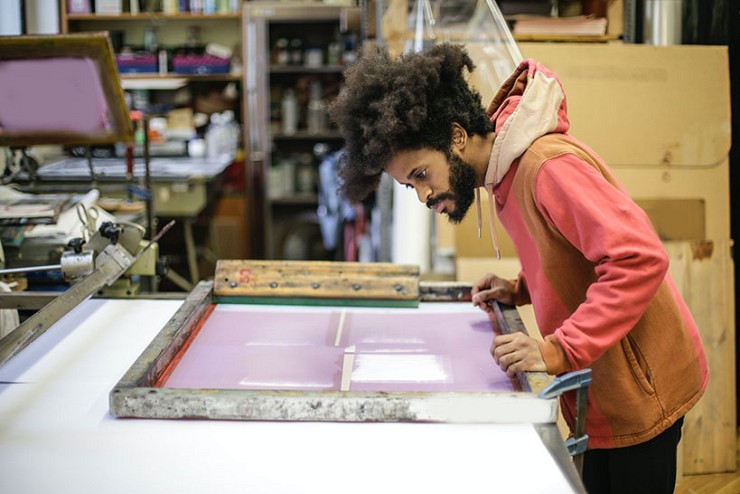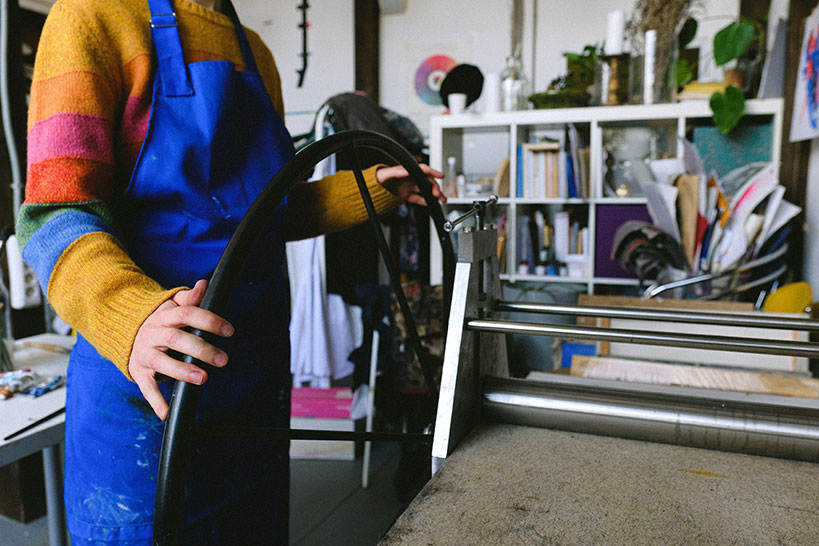What is Silk Screen Printing?
Posted on 20 April 2022

In the customization of products, silkscreening is one of the oldest printing methods that's still in use today. Many companies continue to use this medium for customization for lots of different reasons. Some find it to be a versatile printing method, while others love how it’s cost-effective and can be used to create large numbers of customized items.
But what do we really know about silk screen printing other than it being one of the most popular printing techniques in the world? Keep reading to find out more about this printing medium – from its history to which best silk screen printing company in Canada you can trust today and so on.
Silk Screen Printing: The Definition
Screen printing, also known as silk screening, silk screen printing, or serigraphy, involves a stencilled design and mesh screen over the selected item. When these items are in place, ink is placed on the screen and artists will press a squeegee over the ink. This method will transfer the design through the stencil and onto the surface.
Printers can use other materials, such as polyester mesh, nylon threads, and even stainless steel to create these designs. The outcome and appearance of the finished artwork is determined by the size of the mesh used in the process.
The Origins and Evolution of Silk Screening
Before it became a helpful tool for businesses, people used screen printing for painting beautiful images, colours, or patterns on fabrics and wallpapers. The evolution from interior design to a whole industry in the business world came way long after its invention.
Its History
This printing technique dates back to the Song Dynasty in China (960 - 1,279 A.D), when artists printed their designs on fabrics. Japan then adopted this printing method, becoming one of the first Asian countries to develop identifiable silk screening techniques.
Artists used a stencil design cut out of paper, and a mesh screen weaved from human hair in those days. They transferred ink onto the fabric by driving stiff brushes on the mesh.
Fast forward to the 17th century when the technique arrived in Europe. French printers used silk screens to print on fabric, still with the use of stiff brushes on the mesh. It was only in the 19th century that, when silk became more available for trade, the technique became more popular in Europe.
Squeegees didn't come into the picture until the early 1900s when they were first formed and used to press ink through the screen mesh.
Its Evolution
In the early 1930s, Roy Beck, Charles Peter, and Edward Owens started experimenting with chemicals, like emulsions, to develop photo-reactive stencils. These three would become the innovators of the commercial screen printing industry. They did this by creating a safe and effective way to print.
Advertisers then adopted this screen printing process for their campaigns. Eventually, the technique became more widely used in other areas. It was then utilized by artists and commercial printers for transferring their works to different materials, like fabric, glass, wood, paper, and metal.
In 1938, a group of artists, including Max Arthur Cohn and Anthony Velonis, created the National Serigraph Society to support and promote American artists who use silkscreening in their works.
The group coined the term "serigraphy," which means "sericum," or silk in Latin and "graphein," or to draw in Greek. This society used this term to differentiate screen printing in an artistic use from its commercial use.
In the 1960s, the Marilyn Diptych, an original work of art by artist Andy Warhol, became one of the most famous silkscreen paintings ever created. Other pop artists, like Peter Blake and Robert Rauschenberg, also used screen printing for their crafts.
Michael Vasilantone, an American entrepreneur, artist and inventor, created a screen printing machine that enabled the masses to silkscreen not just on canvas but on clothing too.
When Vasilantone used and sold his patented creation, a boom suddenly came to the t-shirt printing industry. His machine became so popular that it makes up half of the screen printing activity in countries like the USA. Later on, customized t-shirts became a hit clothing item that many people would sell.

The Silk Screening Process
Screen printing is a technique that uses the principle of stencilling to transfer ink through another material. Today, there are different types of screen printing, but they all closely follow the same step-by-step process.
The Tools
Below are the basic tools you need for silk screening:
- The ink (plastisol, water-based, or discharge)
- The printing press
- A flash cure unit
- A squeegee
- A conveyor dryer
The Process
The screen printing process starts with a design printed on a transparent acetate film, placed on an emulsion-coated mesh screen under a bright light. The bright light will allow the emulsion to harden and develop. And when that happens, an imprint of the design will transfer on the screen. When the screen dries, it will be corrected to ensure that the print is accurate.
Items to be printed on, like t-shirts, are laid flat underneath the screen. Both item and screen are placed on the printing press, and then ink is added on top of the screen. The operator will use a squeegee to press the ink through the stencil, which will imprint the whole stencilled design on the item's surface.
The item will then pass through a dryer for a smoother and more colourful finish. Once the ink dries, the operator will wash the finished item to remove any residue.
Full-colour prints are also doable with screen printing techniques like CMYK printing, allowing printers to emulate the exact colours needed for the design. This is done in a few stages, with each colour going through the steps before the next one is added. You can use as many colours for your silkscreen printing as you like.
Did you know?The first promotional shirt made using screen printing was for the film The Wizard of Oz in 1939. During the premiere, they gave away the shirts to fans.
|
Screen Printing Is Here to Stay
Screen printing is an age-old method, yet it's still one of the best mediums for creating designs on items among the many popular printing techniques globally. It has opened many doors for those who want to create a customization business and has provided many customers with customized sentimental items. What’s even more astounding is that you don't have to do the printing yourself to enter the customization industry.
If you have a custom design you want to add to some shirts or items, and are looking for silk screen printing in Montreal or anywhere in Canada, there are options you can look into. There are many suppliers you can get in touch with, like R&P Prints Canada. R&P Prints offers various printing services, like custom sweaters in Toronto and more, and has helped many young entrepreneurs translate their designs to reality perfectly.
Visit printscanada.com today for your silk screening needs. You can also call our toll-free number 1-877-646-5111 for a free estimate today.
FAQs on Silk Screen Printing
1. What is the best ink for silkscreen print
Plastisol ink is the most commonly used ink in screen printing. This ink is durable yet versatile, making it perfect for creating different designs on custom t-shirts.
2. What is screen printing most ideal for?
Silkscreen printing is best for printing designs on various materials like fabric, ceramic, wood, and paper. However, most businesses also use screen printing for customizing items like t-shirts and tote bags.
3. What precautions should you take when doing silk screening?
Always be aware of the dangers of the printing process, and wear protective gear to protect yourself just in case any of these dangers are present. Keep in mind that you should have a good ventilation system since solvents in the air may build up because of less air movement in your workspace. It’s also a good idea to wear a mask when printing to avoid the inhalation of fumes.
Finally, always keep your workspace clean after every print to avoid errors in the next printing job or accidents.
